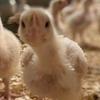Animal welfare audits are performed to evaluate whether a hatchery, farm, or processing plant is meeting the specific animal welfare standards of a certification program.
These programs may be internal to a certain company, or they could be a requirement for animal welfare certification. These certification programs have their own set of standards and audits, which are typically created in collaboration with producers, veterinarians, industry professionals, and scientists. Audits in the United States are generally voluntary as producers can decide which program and audit standards to follow.
Audit standards can incorporate science-based animal welfare measures that mainly focus on housing and management conditions which refers to what is provided to them in their environment. Audit standards may also include animal-based measures which refers to the experiences of the animal.
Animal-based measures are direct measures of welfare based on the animals’ responses to housing and management conditions. These audits are often performed annually and assure consumers that animal welfare standards are being met.
Audit types
There are three types of audits that are commonly performed.
First-party audits are internal and performed by a hatchery, producer, or processor at their own integrated site. These audits are useful for self-evaluation, allowing people to make continuous improvements within their company.
Second-party audits are performed by a company’s customer. The goal of a second-party audit is to ensure that the customer’s requirements are met by the company they are buying from.
Third-party audits are performed by an audit organization independent of the supplier-customer relationship. The goal of a third-party audit is to ensure that animal welfare standards are being met for a certain certification.
There are various certification programs for broilers in the United States (see
PEC vol. 22).
The audit process
During an audit, animal welfare standards are measured using inputs (resource-based measures) and animal-based indicators (animal-based outcomes).
Inputs are related to the environment the bird are raised in. This includes the resources and management that poultry are reared with. These inputs can impact animal welfare, but do not give direct insights into the animal welfare state of an individual.
Some examples of inputs include stocking density, litter quality, handling technique, and veterinary care practices.
While these inputs are valuable in assessing the conditions in which animals live in, and identifying potential risks and opportunities for animal welfare, they should be used in conjunction with direct measures of welfare, based on the animals’ responses to their housing and management conditions.
Animal-based indicators focus on the health, behavior, and affective experiences of an animal, which more directly reflect their actual animal welfare state. These indicators give us insight into how animals survive in the conditions they are provided with.
To identify a welfare problem and their associative risk factors, both animal-based indicators and inputs need to be collected.
This information can then be used to determine corrective or preventative actions needed within the flock.
Examples of broiler welfare certification programs in the U.S.
Below are examples of animal-welfare centered certification programs in the United States. These programs have associated audit tools that incorporate the assessment of inputs and animal-based measures for poultry. Here we discuss some examples focusing on broiler chicken audit tools.
On-farm and pre-slaughter welfare indicators for broilers used in audit tools
The three tables show examples of animal welfare certification programs and animal-based indicators for broilers recorded during an audit. These indicators are mostly focused on the processing plant level. There are animal-based indicators recorded at the other parts of the production system, including the hatchery and grower farm.
For each indicator, we included the sample frequency, sample size, pass/fail threshold, and scoring method. The auditing guidelines with specific compliance standards are also included in the table (adapted from Better Chicken Commitment, 2023).
Audit pass or fail
Farms or processors may pass or fail an audit based on how they scored for all indicators assessed. This pass/fail threshold differs between programs.
In summary
Third-party animal-welfare audits are used in the poultry industry to ensure integrated hatcheries, farms, and processing plants are meeting certification standards of a program.
These audits incorporate animal-based indicators and inputs which can help producers identify welfare issues and their associated risk factors.
Comparisons of animal-welfare indicators between certification programs shows that there are different methods of scoring and sampling, as well as different compliance standards.
Poultry producers should compare these animal welfare certification programs to determine which is the best fit for them.




























